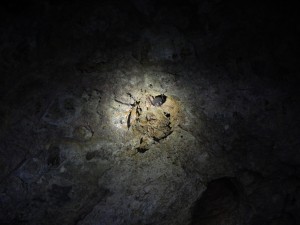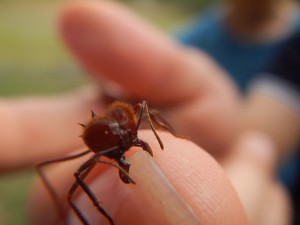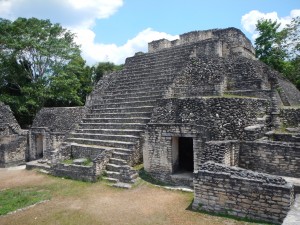Another big day for ants. We retrieved the pitfall traps we have deployed yesterday and the amount of ant species diversity was stunning. I identified species I almost lost hope of finding in this trip. I found Anochetus with long mandibles on narrow head, Wasmannia small but nasty, Neoponera with fat petiole, Pheidole big head and club like antennae, Carebara with giant head, and Adelomyrmex. Not having seen these species in day light, these findings really support my hypothesis that many of these ants are nocturnal, or at least not around in afternoon. However, I still could not identify half of species today, because many of them looked so similar, or were not in my taxa ID sheet. It could be that many of them were same species but in different castes, but I just could not distinguish them and considered them as same species. Also I have to consider that I tend to focus on exotic looking species when making my taxa ID sheet. Tonight’s night hike might give me some more opportunities to find more species. However many of these species are really small that I don’t know if I would be able to identify them so readily during the hike.
Today we had a long discussion about the result of our pitfall trap experiment. Different data interpretations flipped the results that made me think of how to approach data when making conclusion relevant and accurate for the question we are asking. I think I must train myself more in the ability to design statistically sound experiment and analysis methods. In a discipline with large data analysis such ability seems crucial.
Having spent a week in the field, it comes to me that unexpectedness makes field biology awesome. In a lab we can simulate the natural environment but the results are restricted from the limited perimeter. If I conduct an experiment here, I don’t know what will be in my trap. It could be nothing or could be bombardments of ant species I hoped to see. This unexpectedness turns field biology so attractive.












